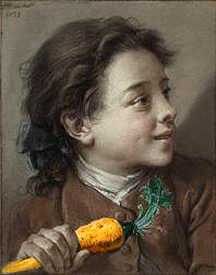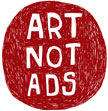2.07.2007
 What good is a revolution without a little controversy?
What good is a revolution without a little controversy?
I stumbled across this interesting article by Jonathan Lethem in Harpers Magazine entitled The Ecstasy of Influence just moments after reading (another) discussion on the question of copyright infringement in the art classroom on the Yahoo Art Ed Discussion List. Today's post isn't so much an attempt to fan the flames of an old discussion as much as it is a suggestion that we think about sparking one in our classrooms.
Lethem does an excellent job of explaining the grey area of property rights and the cultural history of plagiarism, and so I won't regurgitate (or plagiarize) those ideas here. It is an important article for any art teacher to read. However, it also leaves us with an important question: Given the cultural and historical dominance of appropriation in art (from Shakespeare to Picasso, Dylan to Duchamp, from the smallest sampling to outright theft), how do we deal with it in the art classroom?
As art educators, one of our primary goals is to inspire original thought and creativity. Unfortunately, we have a couple thousand years history of artists ripping each other off to deal with; and if it was popular to do "back in the day", its almost second nature to us now. Duchamp appropriated the image of the Mona Lisa for his L.H.O.O.Q. just as I have appropriated L.H.O.O.Q. for a post on appropriation. While his appropriation created (and continues to create) interesting debates on the nature of art, my appropriation is simply one of a million that took place online today. Lethem phrases this phenomenon as a rhetorical question:
"...what exactly is post modernism, except modernism without the anxiety?"In many ways the Internet is the perfect realization of our postmodern lives. If modernism was (in part) about the building of social, cultural, and political forms, postmodernism is about their deconstruction. The medium of the Internet is one which allows sharing of information, of authorship, of ideas. It also forces us to now re-examine not only our notions of how we construct and interpret information, but our concept of ownership.
I am typing this post on my computer in my apartment, and at this moment in time it only exists on my computer in no where else. When I hit the "Publish" button at the bottom, it will cease to be on my screen (at least temporarily), and be available to anyone in the world with Internet access. At that point, there is no more original and everyone who reads this is reading a copy. There is a little envelope icon at the bottom of each post so that you can instantly send another copy in email form to your friends and neighbors without even mucking about with the whole 'copy and paste' hassle. In fact, every time you reply or forward an email, you are copying the author's text to the bottom of your email. It is now so ingrained, to copy and paste, its not even something we think about anymore. If I need a picture (like L.H.O.O.Q., for example) I can right click my mouse and take it from anywhere that I can find it.
Of course this raises ethical questions (is it unethical to copy a picture that is a copy of another picture?), but the most important question is about how we help students navigate ethics in the digital environment. For students who are raised in the postmodern-Internet-driven era, it affects all aspects of their lives. The postmodern world they live in is the only one they know. The Internet not only changes the way we communicate, but it rewires our concept of communication. Information and communication have always been instantaneous for our students. Think about how that changes the notion of "research". If I were to research a topic when I was in high school, that would require me going to the library, opening up the card catalog, finding my books, and then scanning or reading for the relevant information. Today I simply type my request into Google, and I get 50 results that are better tailored to my individual needs than any library. With that immediacy comes an increased need for an understanding of responsibility. Information is now easier to come by and easier to reproduce, and therefore we don't give it as much thought.
There are many ways to deal with copyright and appropriation issues in the classroom, but we have to deal with it. Art has always had a close (love/hate) relationship with it and we're ignoring a large chunk of art history to simply dismiss it from our classrooms. From Letham:
Whatever charge of tastelessness or trademark violation may be attached to the artistic appropriation of the media environment in which we swim, the alternative—to flinch, or tiptoe away into some ivory tower of irrelevance—is far worse. We're surrounded by signs; our imperative is to ignore none of them.
Perhaps a better use of our time would be to explore the appropriate use of appropriation and re-interpretation. The art classroom should be a place of exploration. Navigating the foggy terrain in the space between inspiration, appropriation, and theft is a difficult task - the only way to do so will be to allow that spark of a debate to catch fire among our students as well. The ability to understand these issues is critical in an age where ownership of information changes in an instant.














